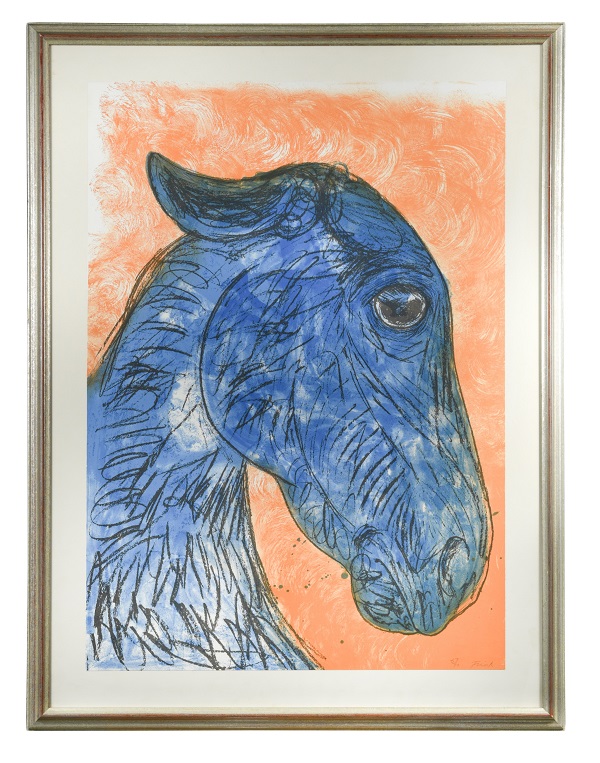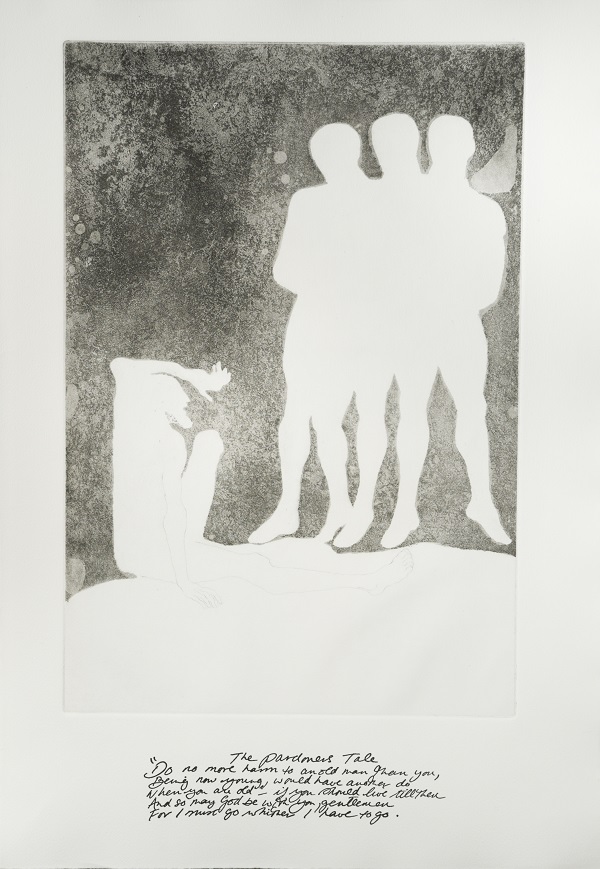Elisabeth Frink CH, DBE, RA (1930 – 1993) was an English sculptor and printmaker, whose work is counted as some of the most important of the post-war era.
- Elisabeth Frink was born and raised in Suffolk
Elisabeth Frink was born in 1930 in Great Thurlow, Suffolk, only 18 miles from Cambridge. Born to Ralph Cuyler Frink and Jean Elisabeth, she was raised in a Catholic household only miles from nearby military airfields at Stradishall and Wratting Common. The Second World War, which broke out shortly before Frink’s ninth birthday, provided content for some of her earliest works, with imagery of falling men and wounded birds appearing repetitively in her drawings. Whilst having grown up in the Suffolk countryside, her affinity with birds and horses went on to provide later subject matter for Frink throughout her career.

Elisabeth Frink, Study of a Bull sold in May for £1,100
- Frink was a ‘Geometry of Fear’ sculptor
Frink studied at the Guildford School of Art and the Chelsea School of Art and became part of a post-war group of British sculptors, dubbed the Geometry of Fear school which included Bernard Meadows and Eduardo Paolozzi amongst its members. Tutors of Frink at the time included Ceri Richards and Julian Trevelyan and Frink is recalled having said that she made plaster sculptures of animals and men which were ‘very strange sort of gothic apocryphal figures, very gloomy.’ The Tate bought one of these early sculptures, titled Bird, when Frink was only 22 years old.
- War, horses, and human form – the main subject matter for Frink’s work
According to her obituary in The Times, the three essential themes of her work were ‘the nature of Man, the ‘horseness’ of horses; and the divine human form.’ These subjects can be seen repetitively throughout Frinks prints and sculptures, such as in Blue Horse Head, pictured below, which Cheffins holds the record value for a copy of the signed print at £5,500. Frink’s father had been an amateur jockey and she is said to have learnt to ride at the age of four, leading to a long-term fascination with horses.

Elisabeth Frink, Blue Horse Head
- Frink’s final sculpture was installed only a week before her death
Despite her prolific printmaking and drawing, Frink was best known for her outdoor bronze sculptures, which were exhibited the world over. Some of her best-known works are her ‘goggled heads’ series which were completed from between 1967 and 1970 when she was living in France. These were followed by male nude figures, such as Running Man which is currently at the Carnegie Museum in Pittsburgh. Risen Christ was her last sculpture, this colossal statue stands above the West Door of Liverpool Cathedral. Only a week after its installation, Frink died of cancer in April 1993.
- The market
Frink’s sculptures can be seen the world over, including at Chatsworth House, Coventry Cathedral and at the Tate. Frink’s original sculptures and drawings can reach astronomic sums when they do come available. Recently a bronze by Frink titled Dog, realised £100,000 at auction. However, for those with more realistic budgets, signed prints by Frink are seeing a resurgence in popularity. There are a handful of images which Frink had printed in large quantities and hand signed, such as Blue Horse Head, Study of a Bull, The Canterbury Tales and Small Horse and Rider, which are now selling for around £1,000 - £5,000 depending on quality and print run. These can often be found at auction or through specialist dealers. Anyone in the market for print by Frink should check out the Affordable Art Sale in which we are offering a pair of unframed etchings and aquatints from her ‘Canterbury Tales’ series and also a group of seven unframed lithographs which were published by the Folio Society, with estimates up to £400.
View the Frink lots here.

Elisabeth Frink, The Canterbury Tales, available in The Affordable Art Sale